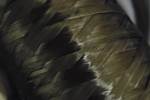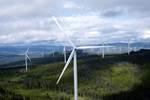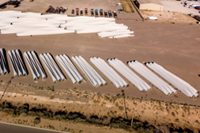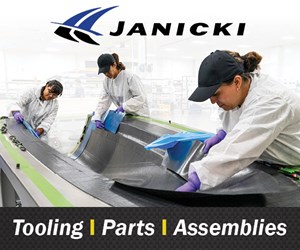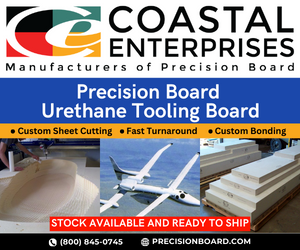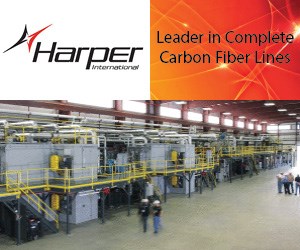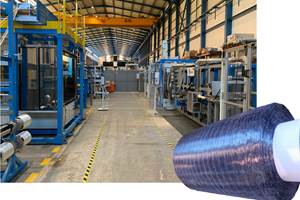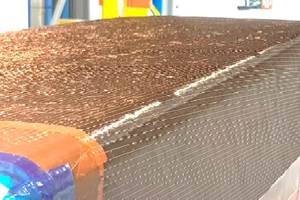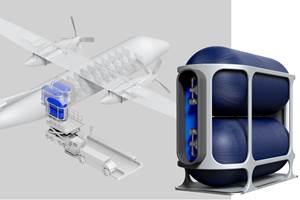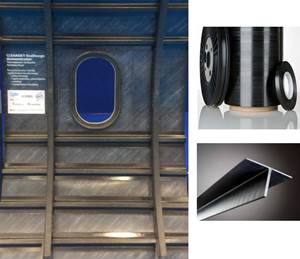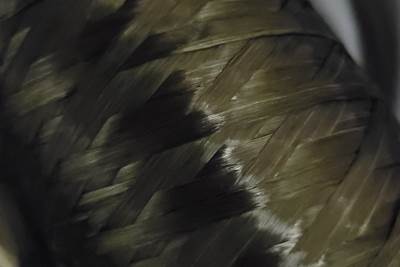Advancing multifunctional composite wings and fuselage structures
Flexible printed circuits and the Advanced Concepts for Aero‑Structures with Integrated Antennas and Sensors (ACASIAS) consortium.
Flexible Printed Circuits in unlimited lengths
Earlier this year, Trackwise (Gloucestershire, UK) shipped a 26-meter long multilayer flexible printed circuit (FPC) —believed to be the longest ever produced — for distributing power and control signals across the wings of a solar-powered, unmanned aerial vehicle (UAV). In fact, Trackwise supplied more than 50 FPCs for this vehicle, cutting weight by 60% versus using conventional wire harnesses for aircraft power and control.
This weight savings enables the US-made UAV to achieve higher payload and/or improved speed and range. Trackwise manufactures the FPCs using Improved Harness Technology (IHT), a patented, reel-to-reel manufacturing technique. IHT overcomes conventional manufacturing limitations which have kept most FPCs below two meters in length, and enables Trackwise to produce FPCs in unlimited lengths.
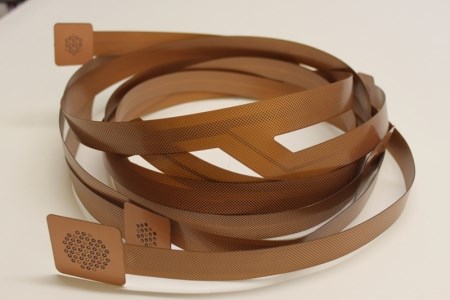
A 5-meter long, 6-layer flex PCB manufactured by Trackwise.
The FPCs that Trackwise delivered for the 26-meter-wingspan UAV were based on a polyimide substrate. Their planar structure dissipates heat better than conventional wiring, enabling higher current carrying capacity for a given weight of copper conductor. Other benefits include:
- Printed manufacturing ensures circuit consistency
- Fewer connection points are needed so reliability is enhanced
- The FPC is easier to install than wire harnesses, reducing a vehicle’s assembly time and cost.
According to Trackwise CEO, Philip Johnston, many new aerospace and automotive applications are emerging for these long, lightweight flexible, multilayer, printed circuit boards (flex PCBs). Both industries are seeing a push toward electrification simultaneous with a need for more sensors and control.
FPCs in composites?
Curious to know if Trackwise was embedding this FPC into composites, I began a discussion with Neil Bartlett, Trackwise director of sales and marketing. “For the UAV application highlighted in our March press release, the flex [flexible PCBs] were not embedded into a composite,” he concedes. “However, their planar nature makes them entirely suited to embedding into composites and enabling multi-functional structures. We are in preliminary discussions regarding incorporating flex — both power and signal variants — across a broad range of possible applications including aerospace, defense and construction. Trackwise is also a member of Advanced Concepts for Aero‑Structures with Integrated Antennas and Sensors (ACASIAS) – a consortium of 11 partners which is developing innovative technologies for integrating antennas into composites and aircraft structures.” (http://www.acasias-project.eu/)
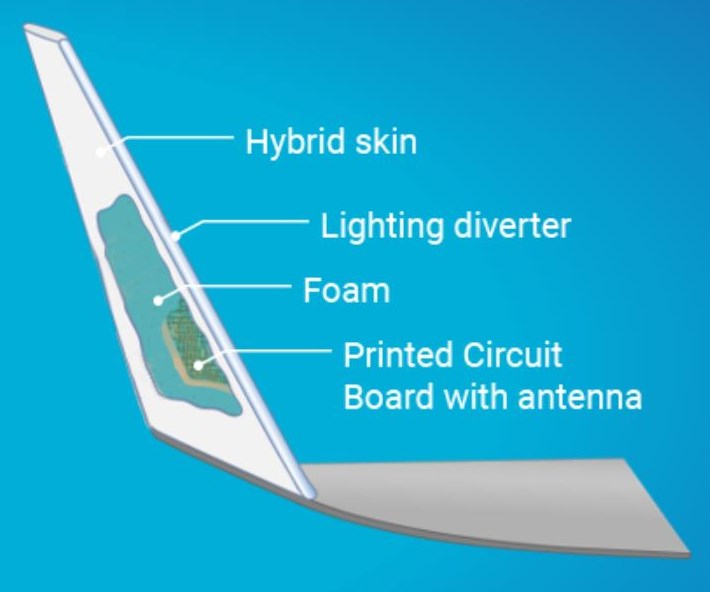
A smart winglet with integrated blade VHF (Very High Frequency) antenna.
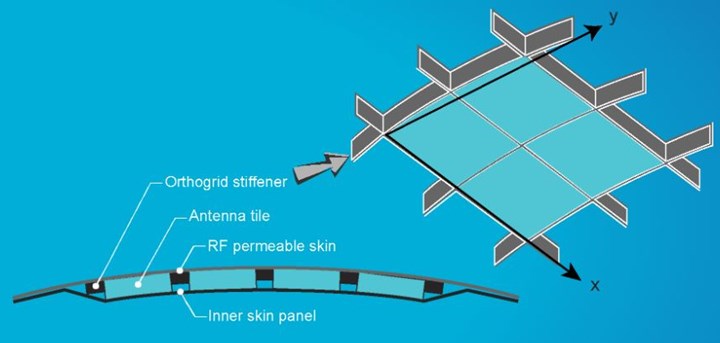
Stiffened orthogrid fuselage panel for the integration of a Ku-band SATCOM antenna array.
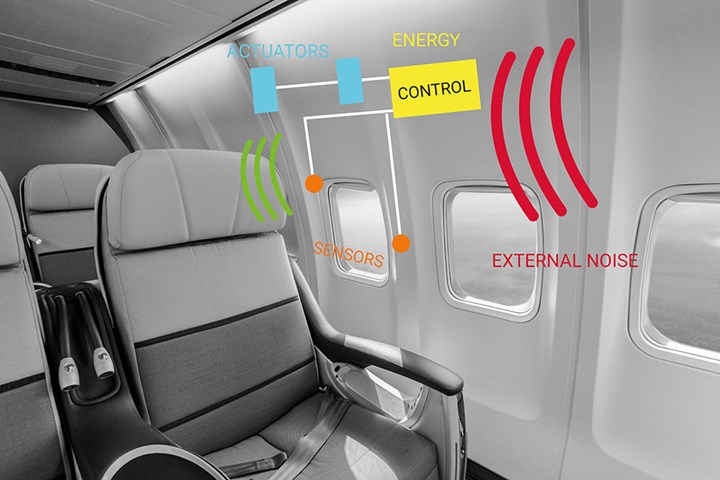
Active Structural Acoustic Control system for reduction of CROR cabin noise with minimal impact on weight. SOURCE | http://www.acasias-project.eu/files/Acasias_poster_v2.pdf
Bartlett says that flex PCBs made using IHT and composites are very synergistic in what they are offering the market and the advantages of combining/embedding them are compelling, including:
- Weight savings (elimination of fixing fixtures)
- Improved ruggedness/protection offered by composites = improved reliability/reduced maintenance
- Reduced space envelope = improved payload capability/structural efficiency
- Improved installation = less labor touch points (improved reliability), less time and cost.
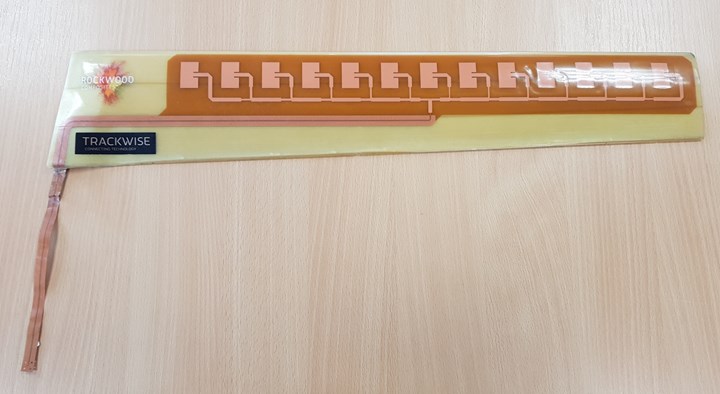
This demonstrator flex antenna embedded into a glass fiber composite was manufactured by Trackwise in collaboration with Rockwood Composites and exhibited at JEC World 2019. SOURCE | Trackwise
Moving forward
IHT revenues are up 217% with customers and development opportunities increasing from 7 at the start of 2018 to 45 by March 2019. Trackwise has also installed two new process lines.
Several ACASIAS projects will be presented at the 2019 European Conference on Multifunctional Structures (EMuS, June 11-12, Barcelona, Spain), which is co-chaired by ACASIAS coordinator Dr. Harmen Schippers, Netherlands Aerospace Center (NLR, Marknesse). Highlights include:
- Airbus Defense and Space has explored embedding an electronic steerable SATCOM antenna operating at Ka band in the wing to fuselage fairing of a passenger aircraft. The project is partly funded under Clean Sky 2 and include partners GILAT, RAYSAT and FBM Composite Materials Ltd.
- NLR is exploring an orthogrid structure for integrating square antenna elements into a composite fuselage, using a radio-transparent glass fiber skin and carbon fiber composite ribs.
- The German Aerospace Center (DLR) and China’s AVIC Beijing Institute of Aeronautical Materials (BIAM) have investigated the use of recycled carbon fibers to increase the mechanical strength and multifunctional aspects of bio-composites, looking at electrically conductive composites for electromagnetic interference (EMI) shielding and lightning strike protection (LSP) via the ECO-COMPASS project.
Related Content
Novel dry tape for liquid molded composites
MTorres seeks to enable next-gen aircraft and open new markets for composites with low-cost, high-permeability tapes and versatile, high-speed production lines.
Read MoreOne-piece, one-shot, 17-meter wing spar for high-rate aircraft manufacture
GKN Aerospace has spent the last five years developing materials strategies and resin transfer molding (RTM) for an aircraft trailing edge wing spar for the Airbus Wing of Tomorrow program.
Read MoreCarbon fiber in pressure vessels for hydrogen
The emerging H2 economy drives tank development for aircraft, ships and gas transport.
Read MorePEEK vs. PEKK vs. PAEK and continuous compression molding
Suppliers of thermoplastics and carbon fiber chime in regarding PEEK vs. PEKK, and now PAEK, as well as in-situ consolidation — the supply chain for thermoplastic tape composites continues to evolve.
Read MoreRead Next
From the CW Archives: The tale of the thermoplastic cryotank
In 2006, guest columnist Bob Hartunian related the story of his efforts two decades prior, while at McDonnell Douglas, to develop a thermoplastic composite crytank for hydrogen storage. He learned a lot of lessons.
Read MoreComposites end markets: Energy (2024)
Composites are used widely in oil/gas, wind and other renewable energy applications. Despite market challenges, growth potential and innovation for composites continue.
Read MoreCW’s 2024 Top Shops survey offers new approach to benchmarking
Respondents that complete the survey by April 30, 2024, have the chance to be recognized as an honoree.
Read More

